Plans to build thousands of homes to meet government targets will ‘wipe out’ Thomas Hardy’s Wessex landscape and turn it into a ‘concrete jungle’, campaigners have said.
Developers have unveiled computer generated images that show how 950 acres of countryside that inspired the Victorian novelist will become a massive housing estate.
The 3,750 homes to the north of Dorchester will obliterate the fields and water meadows Hardy wrote about in his famous work The Mayor Of Casterbridge.
In the book, Hardy wrote that Dorchester stood with ‘regard to the wide fertile land adjoining, clean-cut and distinct, like a chessboard on a green table-cloth’.
The Thomas Hardy Society is objecting to the plans along with the town council, the Campaign for the Protection of Rural England (CPRE) and local residents.
But they fear the development is a foregone conclusion as it has featured in Dorset Council’s new Local Plan consultation, which is now open to the public.
The campaign group, Save The Area North of Dorchester (STAND) has said that it is an ‘internationally-important cultural landscape’ with connections to Hardy and fellow writer William Barnes.
As well as the massive Dorchester scheme, the council blueprint for new build housing has identified swathes of Dorset countryside that can be developed on with 30,000 houses.
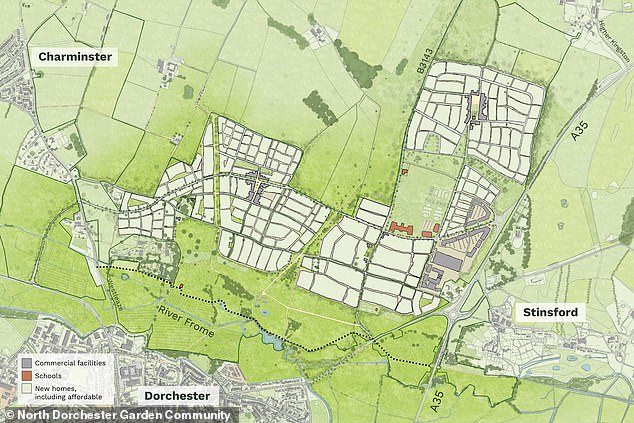
Plans for the North Dorchester community which could be built in the countryside under new plans
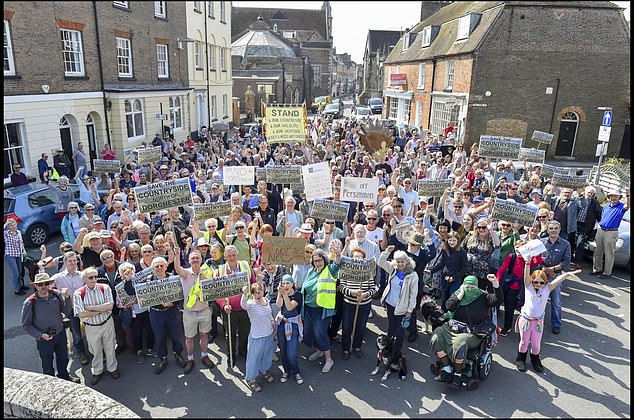
Hundreds have marched to protest plans by controversial housebuilder Persimmon Homes to build 3,500 properties on countryside that inspired Thomas Hardy
The Hardy Society say the author’s beloved Wessex is ‘under threat’ and the Local Plan would wipe it out.
The CPRE has stated that the proposals are to fill the national housing target set by the government, rather than actually reflecting a local need.
They have urged Dorset Council to push back against the government edict.
The plans for the Dorchester housing estate will be decided upon first.
The first phase of 850 homes would be completed by 2034, with the whole project finished by 2048.
Mark Chutter is the chairman and academic director of the Hardy Society and involved with STAND.
He said: ‘This development would run from Charminster, right across to Stinsford, right up to where Hardy is buried at the church there.
‘What they are proposing will be larger than Poundbury. Where’s the infrastructure coming from?
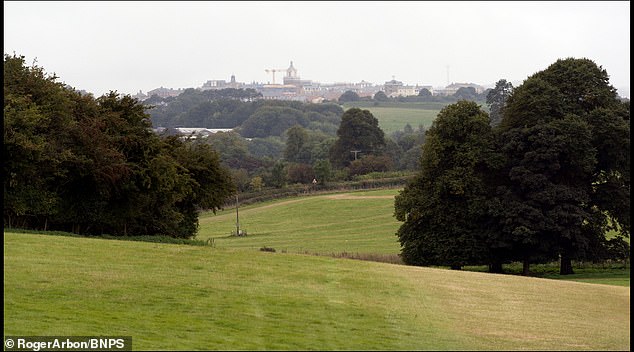
Planning chiefs have earmarked a vast area of unspoilt landscape surrounding the Victorian writer’s beloved Dorchester for the massive housing development

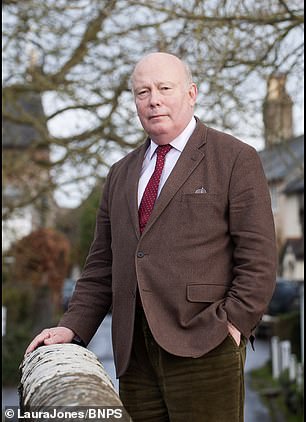
Thomas Hardy (left) and Downton Abbey creator Lord Fellowes who has added his voice to campaigners trying to stop a development in the area that inspired one of his novels
‘The government keep talking about sustainability and the environment, this is going to be a concrete jungle.
‘The landscape is beautiful there and they would be building on water meadows so flooding is a real concern.
‘This isn’t about nimbyism, we believe low cost housing is important and everybody needs somewhere to live, but the location is of important heritage and this development would not be low cost housing for local people.’
Mr Chutter described the plans as a ‘concrete jungle’ and an ‘act of cultural vandalism’ that would ‘desecrate’ the landscape Hardy depicted.
He told The Times: ‘Dorchester is one of those places where you can be plonked in the middle of town and then you can walk out into the countryside within a minute.’
‘It is a place of stunning natural beauty and we’re really concerned that this will be lost for ever. We just feel it’s so important to the heritage of Hardy [to stop it].’
Dorchester was renamed Casterbridge by Hardy and it featured prominently in his works.
Mr Chutter said Hardy cared deeply about preserving the local area and his strong connection with the town is evident in his writing.
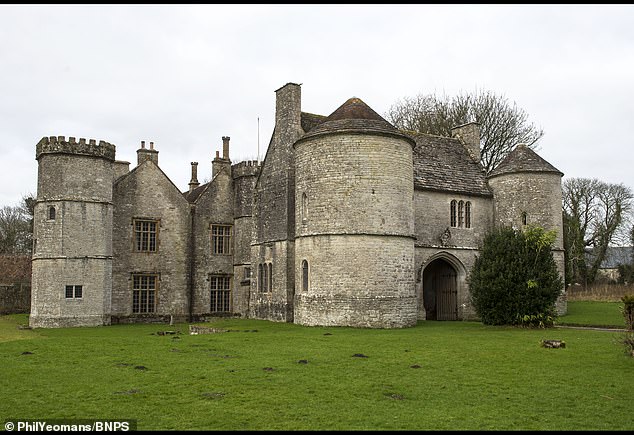
Wolfeton House, which has a gatehouse thought to date back to the 1350s, is just 200 yards from the proposed development
He described the town as ‘clean-cut and distinct, like a chessboard on a green tablecloth’, a quality that would be lost if this development is permitted.
The development would go right up to the edge of Stinsford, Hardy’s burial spot and somewhere he walked to regularly from his home at Max Gate to visit his first wife’s grave.
The author’s heart is buried with his wives Emma and Florence at Stinsford, although the rest of his ashes are interred at Poet’s Corner in Westminster Abbey.
Stinsford was renamed Mellstock in Hardy’s novels Under the Greenwood Tree and Jude the Obscure.
Developers behind the ‘North Dorchester Garden Community’ say the plans include dedicated employment zones, flexible retail/entertainment uses, neighbourhood centres and an education campus.
In a report by Bidwells LLP, on behalf of developers Grainger Plc and Wyatt Homes, they acknowledge the opposition but state no other site has been identified for the expansion of the town.
Downton Abbey creator Lord Fellowes, who is president of the Hardy Society and lives at Stafford House, near Dorchester, has previously spoken out against the plans.
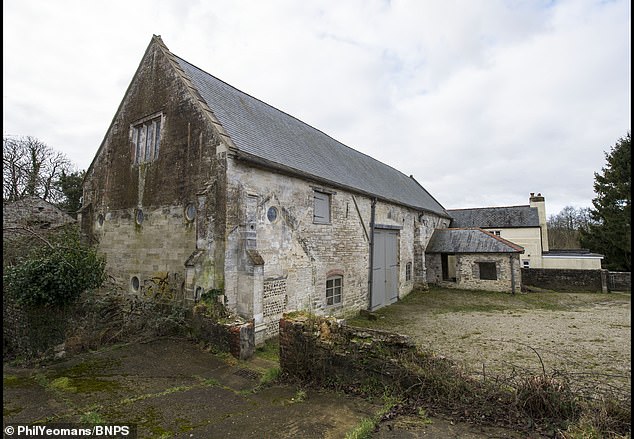
The historic Grade I-listed Elizabethan manor, Wolfeton House, that inspired Thomas Hardy is under threat from plans to build 120 houses in a neighbouring field
He said: ‘If our countryside gets through this generation unscathed it will be something of a miracle.
‘We do have to be a modern county but I don’t feel the burden of extra development is being shared equally in Dorset.
‘I can’t claim that every inch of Hardy country and its history is under threat whenever development is proposed.
‘But there are very few other world renowned novelists where you still have the house they were born in, the house they wrote their books in and the villages and countryside they based their characters and scenes on.’











